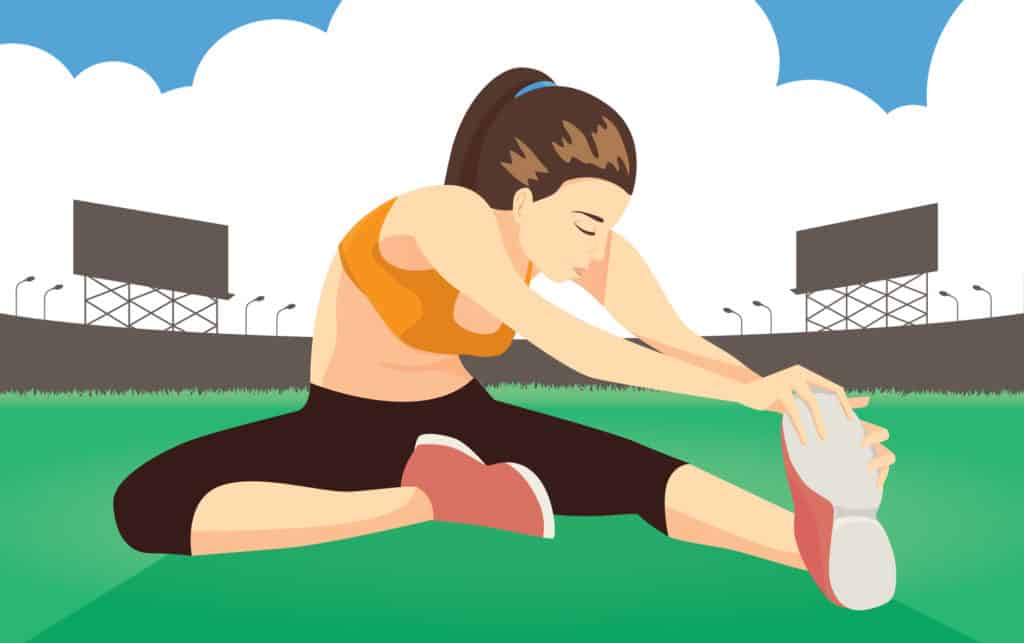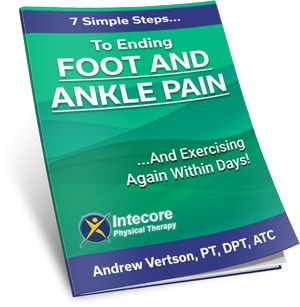
Does your body always feel stiff and sore?
Are you stretching every day?
Most people aren’t.
In our quest to remain healthy and fit, we think about working out at the gym, walking, jogging, etc. Unfortunately, most of us are usually guilty of focusing a little too much on how we look, instead of how we feel, too. It seems to be the way of the modern world, but it will be doing your body harm.
We generally overlook things like stretching – flexibility, and mobility. But they’re an integral part of our physical well-being, joint health, strength, and longevity.
Muscles are like rubber bands that, when shorter and tighter, produce less force (they’re weaker) with a greater risk of them snapping. On the other hand, the longer and more flexible the band (the muscle), the less likely it will break, and it’ll produce a more significant force (be stronger).
When your muscles are inflexible and stiff, it becomes harder to carry out your daily activities – even sitting at your desk. Plus, it increases the likelihood of injury. On the other hand, having flexible muscles and joints makes it much easier to bend and stretch, exercise and carry out your daily activities – without damage.
Therefore, we need to include mobility and flexibility into our daily exercise routine (using the exercises we list below and others we can teach you). Not just work out at the gym. Although building strength at the gym is vital for muscle and joint health, too, we recommend you do both if possible.
What Are The Benefits Of Stretching?
When your muscles are stressed (from overuse and improper posture), they become tense, which over time causes a cascade of problems inside your body, most notably pain and stiffness.
Stretching reduces your risk of injury considerably, along with many additional physical and mental health-boosting benefits. But the main benefit concerning improving chronic pain is that it helps improve the flow of blood and oxygen to your joints and muscles.
More blood and oxygen reduce inflammation and prevents sore joints and rigid, immobile muscles.
Doing muscle stretches removes tension from the muscles and assist in relaxing them prevents stress. For instance, many people suffer from pain in the lower back that is generally caused by weak back muscles leading to poor posture.
The main muscle groups associated with posture are the lower back, hamstrings, hip flexors, and quadriceps. Stretching these groups of muscles reduces and may even prevent pain in the lower back and improve posture.
When Is The Best Time To Stretch?
Most people believe that “stretching” is just something you do before and after intense exercise. While this is true, and it does make your muscles and joints more flexible to prevent injury during the activity, before and after sport isn’t the only time you need to stretch. Often, the less active you are, the greater the need to stretch and mobilize your joints.
Everybody – from elite athletes to couch potatoes and everyone in between – should stretch every day for optimal health.
Ideally, the best time to stretch is when you get out of bed (in the morning) or just before getting back into bed at night. But if you’re able and for even greater health benefits, do both.
When you perform stretching exercises when you get up, it helps release stress and reduce the tension in your muscles that may have built up overnight while inactive. In addition, stretching in the morning helps to improve your blood circulation and leaves you fresh and ready to get on with the day.
Likewise, stretching before sleep releases the stress and tension you’ve built up throughout the day from bending, twisting, and slouching at your desk or languishing in front of the TV. Stretching before bed also contributes to better sleep.
Many popular exercise modalities like Pilates and Yoga include stretching as an integral part of their workout routine. But if you’re not into those, regular stretching exercises can help you become more mobile and flexible.
Below, we share a select few of our favorite stretching exercises that you can do at home. But remember, if you feel any discomfort or increase in pain at any stage, stop immediately and consult your doctor or physical therapist. Do not attempt to push through the pain.
You build mobility and flexibility up gradually over time by adopting a regular stretching routine that your body adjusts to, so don’t overdo it.
Rome wasn’t built in a day. Take it easy.
Note: Do all exercises on a flat and even floor. Ideally, with a padded mat to protect your knees.
Vertical Stand
Get up, stand upright, and extend both of your arms as high up as possible towards the ceiling – as if you’re trying to touch the ceiling with your fingertips.
Take long, deep breaths while retaining this position for at least 10-15 seconds. Do about 5-8 repetitions.
Spinal Extension
Variations of this exercise are also known as a “cobra” or “up dog” in yoga.
Adopt a prone position with your hands flat on the mat at shoulder level. Gently push up your body using your arms and back muscles – while gently extending and stretching your back.
Retain the pose while taking deep breaths and gradually lower the body downwards on the floor.
Do 4- 5 repetitions of the pose.
Shoulder Stretch
First, stand upright and link both hands by interlocking fingers behind your back. Next, stretch the shoulders back as much as possible and push the joined hands upwards towards the ceiling. This stretch is likely to be difficult initially, but your range of motion will improve in time.
Retain the position while breathing deeply.
Do 3-4 repetitions.
Knee Roll
Lie on your back while bending the knees with your feet flat on the floor.
Gently move your knees over to the right side and then the left while gradually increasing the range. At all times, one foot must rest flat on the floor. You should feel a gentle stretch along the opposite side of your body.
Repeat the pose 5-6 times on either side.
Side Stretch
Get in a standing position and lift your left arm towards the ceiling.
Use your right hand to clasp the left wrist and tug it gently towards the right, with the torso leaned slightly in the same direction. In this position, the left arm must cover the left ear.
Breathe inwards deeply with the knees straight while holding the position for 4-5 breaths.
Get back to a neutral position and repeat on the other side.
Cat-Cow Stretch
Get down on “all fours” – on your knees – while supporting the body with the arms and legs. The shoulders should be wide apart.
Take a deep breath inward and look upwards while lowering your belly. Next, lift your tailbone while the stomach is lowered and curve the back downwards to the floor.
Exhale after 8-10 seconds, bring the chin down, and pull your belly button inwards. At the same time, your back should protrude outwards with the tailbone lowered. Next, position your hips over your knees.
Repeat the pose 5-6 times.
Pelvic Bridge
Lie on your back, bend the knees with feet placed flat on the floor. Take a deep breath inward and slowly raise your pelvis in an upward position as much as you can.
Breathe out and gradually bring the hips back flat on the floor.
Do 5-6 repetitions of the exercise.
Forearm Stretch
Stretch your left arm across to the right side in a standing position.
Next, lift the left elbow and slowly pull it near your body with the right arm.
Breathe deeply and retain the position.
Get back into a neutral position and repeat the process with the right arm.
Knees-to-Chest Stretch
Lie down flat and gradually lift your right knee upward toward your chest.
Then grasp the knee with both hands and breathe inwardly 4-5 times.
Repeat the process with the left leg.
Core Stretch
In a standing position, position your right foot a bit forward while twisting your torso towards the left as much as you comfortably can.
Retain the position while breathing a few times deeply.
Repeat the exact process towards the right side, with your left foot slightly forward.
Learn How To Stretch
All the exercises above are great to get you started with a basic stretching routine.
Still, they’re pretty generic – they’re not tailored to help your specific type of pain. You may also feel pain while performing them, which is not advisable.
If this is the case for you, or you would like to learn wit stretch and mobilize your joints and muscles and reduce pain under the supervision of a Physical Therapist, you can book a free consultation appointment to talk to one of our experts here.
With our help, your mobility, flexibility, and pain levels will improve much more quickly. We can also give you a specific set of therapeutic stretching exercises to do at home that is tailored to you and the area of your body that is causing you pain.
We look forward to hearing from you, and helping you be the fittest that you can be!
Get in touch with us through our contact page, and let’s do this!
- 7 Ways to Get Rid of Tension Headaches Naturally - July 1, 2025
- Why Are My Feet Swollen? Common Causes Explained - June 2, 2025
- What Is Restless Leg Syndrome? Symptoms, Causes, and Relief Options - May 5, 2025
















